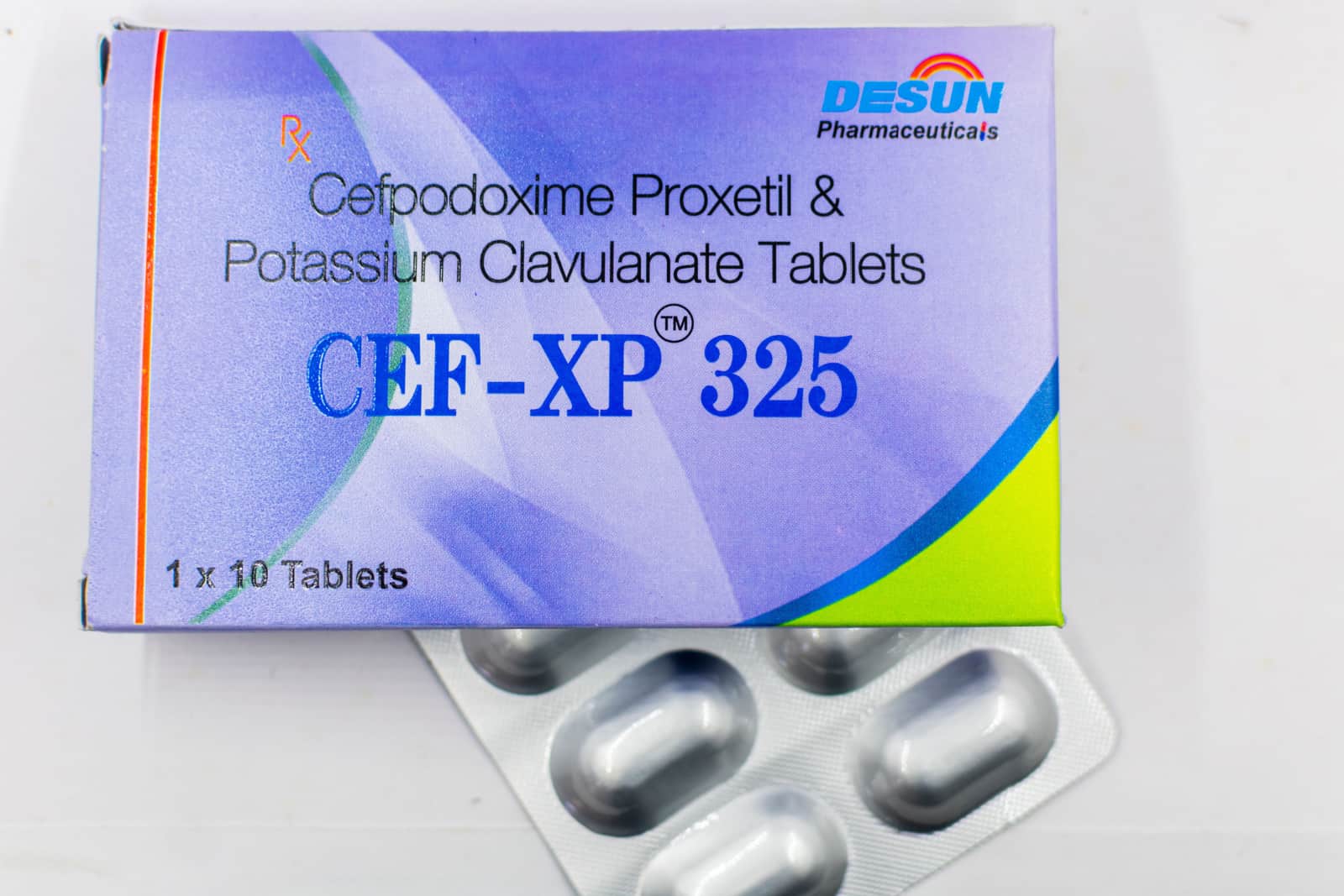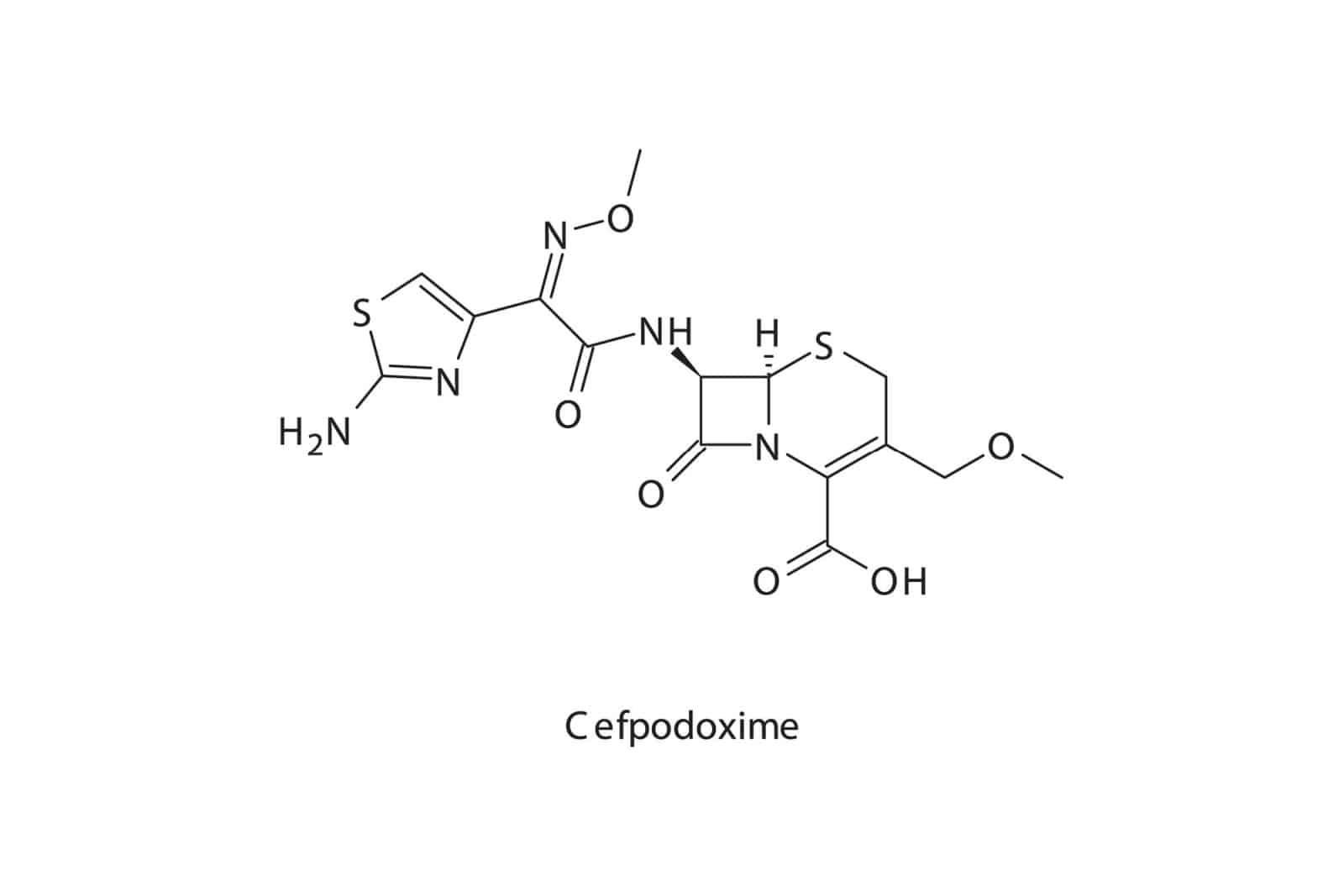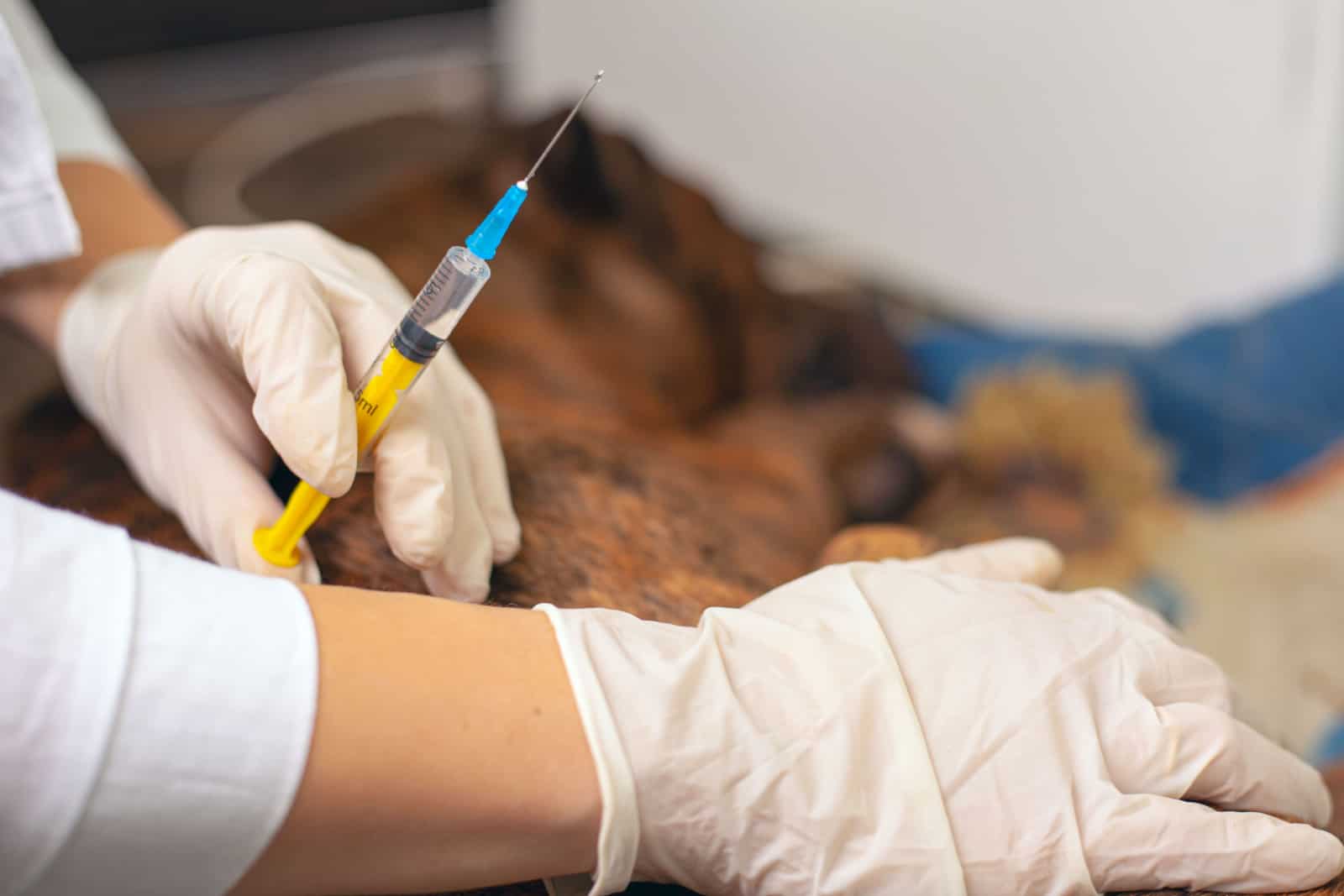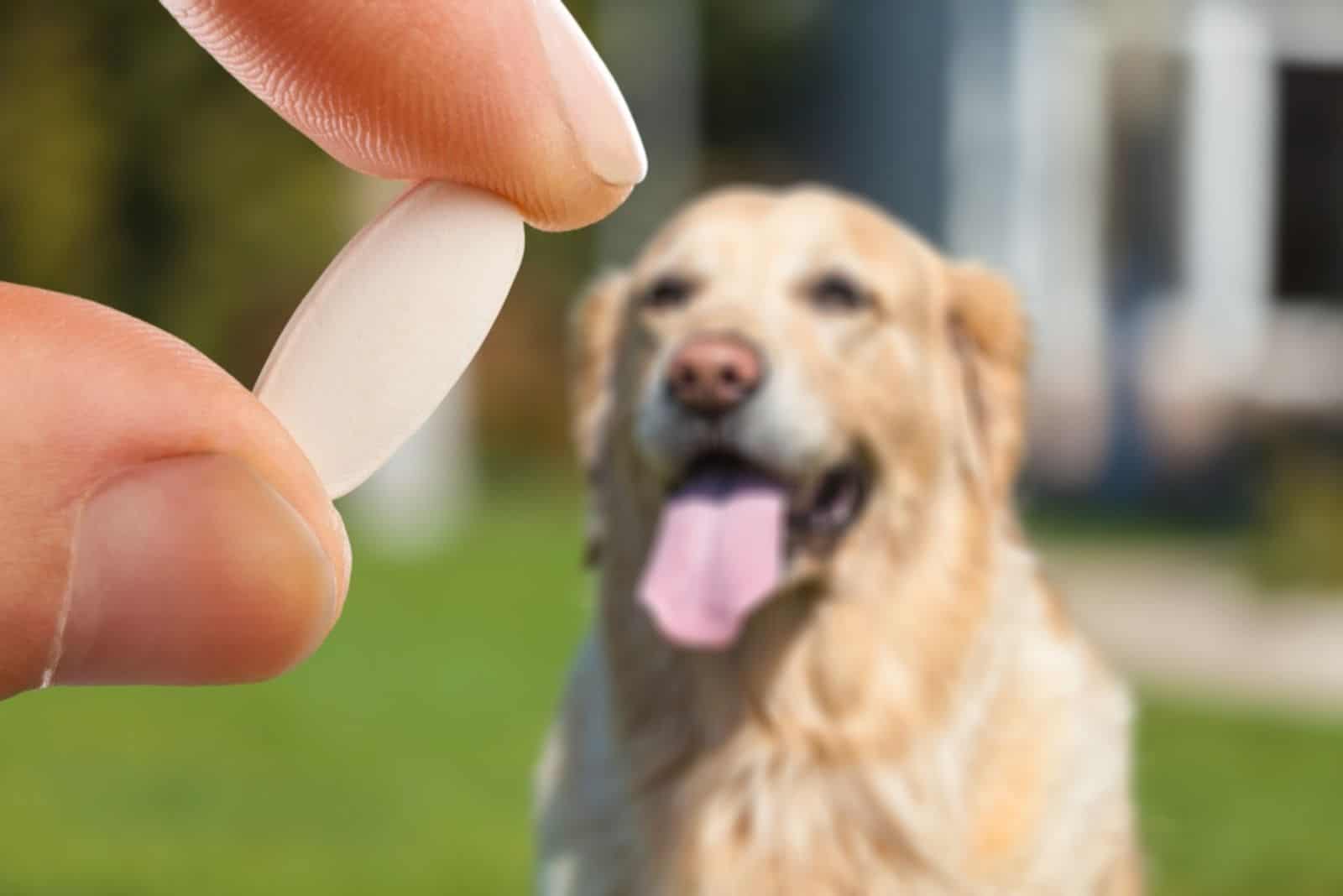With an overwhelming number of meds on the market, knowing all about the use and side effects of Cefpodoxime for dogs will make the vet visit that much more relaxed.
Even after visiting the vet, you might have questions about the effectiveness, so I decided to give a little breakdown of it.
As an antibiotic, it should not be troublesome in terms of contraindications, but there are cases where adverse reactions occur. Being aware of them is always a good practice, and learning about the way they work can help with secondary care and putting in place the required lifestyle changes.
We will also go through some alternatives that might work better for your dog, just so you can put the possibility of another medication on the table, seeing that vets commonly prescribe Cefpodoxime for dogs with bacterial infections.
How It Works And Most Common Use Scenarios

Cefpodoxime works on two levels at the same time. It is a partially synthetic, third-generation cephalosporin, with the remaining content being beta-lactam. Both these elements are bactericidal, which means they kill bacteria.
To be effective, Cefpodoxime requires successful binding to penicillin-binding proteins (PBP) located in every bacterium’s cytoplasmatic membrane. These membranes are permeable and let the bacterium’s internal structures interact with everything outside the organism.
It is interesting that cephalosporin was synthesized from a fungus called Cephalosporium sp. and that the beta-lactam rings (enzymes) bind to the penicillin-binding proteins, preventing the bacterium from creating a cell wall.
No wall – no protection from foreign bodies, and that means no life within a host organism. Cefpodoxime and other cephalosporin-based antibiotics kill a large majority of gram-positive and gram-negative bacteria.
This means its usage is broad, but veterinarians usually prescribe Cefpodoxime for dogs with bacterial skin infections. Other uses include ear infections, urinary tract infections (UTIs), and respiratory infections.
Keep in mind that all the “other” use-case scenarios are not officially approved and are off-label practices among DVMs. Other drugs that have the same Cephalosporin antibiotic formulation under a different brand name are Simplicef, Cefpodoxime proxetil, Cephalexin, and Vantin.
Cefpodoxime is the only FDA-approved drug for dog skin infections, but as previously stated, off-label (extra-label) use with different bacterial infections is common.
The Right Dose Of Cefpodoxime
Because it is an orally administered antibiotic, you will have to give it to the dog yourself. Your DVM will instruct you how much and at what intervals to administer the drug.
Cefpodoxime comes in tablet form and as an oral suspension (liquid form). Available are 100 mg and 200 mg tablets, with the smaller size being of yellow color and elliptical shape. The larger, 200mg dose, is orange and oblong.
Smaller dosages of Cefpodoxime are used in infections where the concentration of the drug is high, such as urinary tract infections. A higher dose is required for bacterial infections like otitis media (middle-ear infection), where there is not enough tissue for the concentration of the drug.
The once-daily dosing of Cefpodoxime tablets is the preferred method for most conditions in dogs. This makes it very easy to stick to a dosing schedule without much chance of missing a dose.
Using the oral suspension format is extremely beneficial for dogs with urinary tract infections due to the fast absorption and transport of the antibiotic through the kidneys, bladder, and other organs that are part of the UT system.
If your dog has kidney or liver disease, make sure your vet takes it into consideration when choosing the format and dose of Cefpodoxime proxetil.
Never compensate for a missed dose of antibiotic, as this can cause the development of antibiotic-resistant bacteria. Your veterinarian should moderate the use of Cefpodoxime in case you suspect the drug is not having the effect it should have on the infection.
Once the new strain of bacteria becomes resistant to Cefpodoxime, the likelihood of recurrent infections or ineffectiveness of cephalosporin and beta-lactam in any type of infection will increase exponentially.
Side Effects Of Cefpodoxime

Cephalosporin and beta-lactam antibiotics are used exactly because of their low probability of causing side effects or an allergic reaction. Overall, the contraindications are infrequently serious and require no intervention.
The first and most common side effect is vomiting. Since the drug becomes active within two hours after taking it, your dog might vomit immediately after the medication starts to work.
Other side effects include a decrease in appetite, lethargy, and diarrhea. A single case is not a reason for worry, but if one or more side effects continue even after twenty-four hours (the time it takes for the drug to stop being effective), immediately consult your DVM.
We already mentioned dogs with kidney or liver disease in terms of selecting the appropriate format and dosage, but those conditions can be put into context in terms of side effects as well.
These dogs might experience the effects of the medication for a period longer than the usual twenty-four hours, so adverse effects might present themselves later on.
A dog with hypersensitivity to drugs (in this case, antibiotics) can display symptoms of an allergic reaction. Contact your veterinarian or rush to an animal hospital if you notice hives, abscesses, pale gums, facial swelling, skin redness and rash, or shortness of breath.
Prolonged retention of the previously mentioned allergic reaction symptoms can be seen in dogs with liver, kidney, and small intestine issues. For more information on allergies, read our breakdown of the allergy testing process.
Drug-Mediated Autoimmune Hemolytic Anemia
Cephalosporin in humans has been shown to have a rather low incidence of causing autoimmune-hemolytic anemia, but in dogs, the incidence is significantly higher.
Prolonged usage of Cefpodoxime for dogs can lead to red blood cells (RBC) being recognized as foreign bodies, causing an aggressive response of the immune system.
Damage to the RBCs caused by the leukocytes (white blood cells) is interpreted by the body as the end of the red blood cell’s life cycle.
Normally, the erythrocytes that “die of natural causes” i.e. lose the ability to oxygenate the blood, are dismantled in the spleen, and their parts recycled for other purposes. With hemolytic anemia, the spleen cannot cope with the drastically increased amount of damaged RBCs, raising bilirubin.
A dangerously reduced number of erythrocytes in the blood system cannot provide oxygen for the body, and gasses remain trapped in old cells, causing tissue degradation.
More extensive damage is done due to a protein system named the complement system, which increases the speed at which RBCs are destroyed, leading to a fatally low RBC count. The condition has a high mortality rate of twenty to eighty percent.
Diagnosing autoimmune hemolytic anemia is done by performing the COOMBS test. This test is designed to detect the presence of RBC antibodies. A positive test means that a dog has AIHA, and further tests are performed to determine the extent of the damage.
Symptoms of AIHA include lethargy, complete loss of appetite, pale gums, pale skin, poor blood flow, and systemic organ shutdowns.
On An Empty Stomach Or With Food

Both Cefpodoxime tablets and oral suspension can be given to the dog on an empty stomach. Due to the short time the drug needs to become active, the vomiting can be caused by the dog not eating prior to the administration.
Giving Cefpodoxime with food is a preferred method for two main reasons. The first has to do with absorption. Since the small intestine takes nutrients and transforms them into energy (oversimplification), the cephalosporin will be absorbed with them.
That way, the body will go through less stress, and the antibiotic will go “unnoticed”. Vomiting occurs because the chemical structure of the drug irritates the stomach and triggers a response to get rid of the “unknown” synthetic molecules.
Second, all animals hate the taste and smell of medication and will easily recognize it. This is particularly noticeable in dogs who already took tablets or oral suspension without food.
Mixing the drug with food will be much easier than shoving tablets or liquids down your dog’s throat. If you have an extremely relaxed and well-behaved dog, then only the first reason is applicable. Lucky you.
Make sure with your doctor of veterinary medicine that the food you are planning to conceal the tablet in is safe. Certain foods can reduce the effectiveness of the antibiotic or even change its effect on the body.
Most dogs never even notice something is “off” with their food. However, make sure you use different types of food in the mix to mask the scent and powderize the tablet to better integrate with the meal.
Disease And Drug Interactions You Need To Know About

As with any synthetic compound, Cefpodoxime and other antibiotics can interact with other medications quite often. It is important to let the veterinarian know about any supplements or drugs that your dog is taking before they prescribe this therapy.
Colitis
This condition is also known as large intestine inflammation, with diarrhea or liquid feces directly connected with large bowel problems.
Bacterial infections, injuries, parasites, allergies, and primary inflammatory bowel disease are known to cause colitis, but stress is the number one reason behind this disease.
Although the bacteria that result in colitis are common (Escherichia coli, Salmonella, etc.), Cefpodoxime has a severe negative interaction that exacerbates the symptoms of this GI disease.
This happens due to a major disbalance of the natural flora of the large intestine under the bactericidal effects of Cefpodoxime or other cephalosporin-based antibiotics.
Infections that lead to colitis are frequently immune to antimicrobial therapy with broad-spectrum antibiotics, leaving colectomy as the only concrete treatment method. This is a surgical procedure that implies removing the entire colon or the affected portion.
Gentamicin
This strong aminoglycoside-based antibiotic has a moderately severe reaction with Cefpodoxime which can often increase the chance of kidney damage in a dog.
Despite having a similar use case scenario to cephalosporin-based drugs, Gentamicin can be useful in treating urinary tract infections that do not respond to other antimicrobial therapy. However, it is used to treat ear infections and skin infections, too.
For UTIs, it can be administered in IV form or as tablets, while skin and ear infections benefit most from its ointment format. Eye and ear drops are also available for localized infections that can retain high-concentration doses of the antibiotic.
It is frequently found as the main element in combination with steroids, antifungal drugs, etc., in products that are designated for veterinary use only, while its off-label use in the general medical sense is common for other bacterial infections.
Gentamicin’s aminoglycoside base has been shown to cause problems with hearing, trouble breathing, diarrhea, and some other minor issues due to toxicity. Its use should be limited in dogs with bacterial infection and monitored on a daily basis to prevent worsening symptoms.
Antacids
Dogs that have stomach inflammations, throat infections, and gastrointestinal tract problems often use antacids to lower the amount of acid produced in the stomach or to lower the amount of phosphorus in the blood if they have kidney failure.
It is recommended you give your dog antacids at least two hours before the antibiotics. This is the short amount of time the drug will start being excreted from the body via urination or defecation.
Not all antacids are the same, so the active elements of the drug can have different symptoms. Magnesium-based ones often cause diarrhea, while calcium and aluminum-based antacids are associated with constipation.
With the overlap of symptoms from antacids and Cefpodoxime, it is important to find the right combination of therapies, including Cefpodoxime for dogs.
Storing Cefpodoxime Properly
Cefpodoxime tablets should be stored in a dry place in their air-tight container. Keeping them at room temperature (between 68F and 77F) is recommended. It is important that the tablets are not exposed to direct light.
The oral suspension has a shorter shelf life and has to be stored in the refrigerator at temperatures between thirty-five and forty-five degrees. The drug expires after fourteen days, so make sure not to use it after that period.
Bacteria That Cefpodoxime Is Most Effective On

Being a broad-spectrum antibiotic does not inherently mean it will successfully treat any bacterial infection. Many of these bacteria are found on the skin of healthy dogs and humans. Their overgrowth or an open wound are the most common reasons for skin infections.
Seeing as this is the primary use of Cefpodoxime for dogs, we will first look into the various bacteria that this drug is effective on.
Streptococcus Canis Infection
When found on healthy dogs, streptococcus colonies are in low numbers and mostly populate genital, GI tract, and skin areas. An SC bacterial skin infection is not easy to get. Urinary tract infections, otitis externa (ear infection), infective endocarditis, pyoderma, etc.
The two most serious developments of Streptococcus Canis infections are Canine Streptococcal Toxic Shock Syndrome and necrotizing fasciitis. Although the reason for the development of CSTSS is still unknown, its results can be fatal.
Dogs usually fall into a shock state (hence the name) after getting infected by Streptococcus Canis, which is the result of a system-wide organ failure. SC also causes necrotizing fasciitis, but its localized nature is displayed in dying tissue along the fascial planes.
This kind of advanced form of Streptococcus Canis infection is best treated with penicillin G and clindamycin. However, Cefpodoxime is known to have moderately severe interaction with the latter, so make sure these two are not mixed.
Due to the severity of the condition, sometimes the only viable treatment includes combining these two medications or similar drugs despite interaction. The prognosis for a dog with CSTSS is not good, and fatal outcomes are common even after intense therapy.
However, Streptococcus Canis infections most often do not advance to this stage and can be treated with oral or topical Cefpodoxime, Vantin, or Cephalexin.
Staphylococcus (Staphylococcal Pyoderma)
The right balance of germs on a healthy dog’s skin hosts a lot of opportunistic pathogens. Staphylococcus is one of those, and in case the host’s immune system is compromised, it will seize its opportunity to invade the blood and infect internal organs.
Injury and skin irritation are the two most common culprits in providing that chance of infection beyond the skin. Itchy skin will make the dog scratch or chew its skin incessantly, damaging the epidermis (the outermost layer of the skin).
The staph lesions come in two forms, a pustule that is at the center of a red area of skin and scaly or crusty red patches without hair. In most cases, this will be plenty of clinical signs for your vet to diagnose Staphylococcal Pyoderma.
Manifestations of Staph pyoderma can be also seen on dog noses as the skin is soft and more easily injured. Noticing white spots on your dog’s nose is usually not serious, but make sure to read our article describing the possible conditions that can display such a symptom.
Using Cefpodoxime, it will take between six and seven weeks of therapy for the symptoms to subside and reduce the number of bacteria present in the dog’s body. In many cases, antibiotic ointments, shampoos, and similar care or grooming products are recommended.
An immediate recurrence of the disease after successfully finishing the treatment or continuous infections might be an indication of Staphylococcus hypersensitivity. This is defined as an allergic reaction to the staph bacteria.
Treating A Staphylococcus Allergy

While treating pyoderma with antibiotics has a high rate of success and full recovery, hypersensitivity requires a more thought-out approach. It includes giving the dog injections containing dead staph in intervals.
Also called Staphylococcal bacterin, this treatment is most successful in cases of staph allergy. Administration every few days or a couple of times per week can be done at home once the vet explains how and where to inject the bacterin under the skin.
If this treatment does not work, your dog will have to be bathed with medical shampoos and on antibiotics for a while. The only issue with this approach is the probability of Staphylococcus becoming resistant to the drugs.
It is important to continue with therapy despite signs of improvement. No pustules or red crusty skin with loss of hair does not actually mean your dog is cured. It simply means the treatment is working to keep the staph at bay.
Pasteurella Canis And Pasteurella Multocida
This is another opportunistic germ that infects injured tissue and can enter the bloodstream, infecting any organ or tissue in the body. Still, studies have shown that the most frequent organs that P. Canis infect are those of the respiratory and digestive tracts.
Skin infections are also a possibility, but that is mostly the case in dogs that are severely immunocompromised. The majority of dogs with Pasteurella Canis skin infections have some more serious underlying condition that allowed for infection in the first place.
Pasteurella can be found in low numbers on the mucosas of the mouth and gastrointestinal endings. However, when colonies increase their numbers while the immune system is weak, most of the trouble is caused by its more dangerous Pasteurella multocida strain.
Not only does it cause meningitis, endocarditis, and a wide array of other vital organ infections, but it is also zoonotic. This means that humans can be infected by it, usually through dog bites.
Complications commonly arise due to misdiagnosis since multocida cultures are difficult to grow and share a lot of symptoms with Staphylococcus and Streptococcus Canis infections. Those include pus-filled pimples on red skin. Many cases display loss of hair and scaly skin patches.
Being a bacterium that easily mutates and adapts its DNA sequence to “blend in” with the host organism (dog, human or other), the best way to diagnose an active Pasteurella multocida infection is using a polymerase chain reaction (PCR) test.
With a positive diagnosis for this Pasteurella strain, the treatment is usually cephalosporin and beta-lactams, meaning Cefpodoxime for dogs, with penicillin G and cephalosporin and beta-lactam drugs used in humans.
Things You Can Do To Prevent Infection

Prevention is always a better option than treatment. Sometimes infections are inevitable, but in most cases, proper pet care will drastically lower the chances of your dog contracting any of the previously mentioned diseases.
After all, we are trying to avoid using Cefpodoxime for dogs if possible. The hassle of administering the drugs, potential side effects, drug interactions, etc., is far more troublesome than health maintenance.
Practicing good hygiene after playtime and trips to the outdoors can be an effective way of getting debris, soil, and moisture off a dog’s coat. Because scratching, biting, and chewing are the most common ways a dog would open a wound on its skin, regular baths will work wonderfully.
Nowadays, there are many grooming products that have balanced ingredients that help preserve the natural flora balance while smelling great. Check out our list of twenty-two shampoos that smell great and are safe for use on any coat type.
Brushing your dog as often as you can makes it easier to spot symptoms of infection, so even if you have a short-coated breed, grooming sessions will make things more easily apparent. Here are some great brushes for Frenchies (short-coated dogs) and Husky brushes for a long coat.
Trimming those long and sharp nails can be beneficial in reducing the chance of hurting the nail bed or injuring the skin. With this guide on how to prepare and help your dog relax for nail trimming, you are guaranteed to succeed.
A Comprehensive Diet

Dog food is what keeps your dog healthy and active. Feeding it high-quality food will boost the immune system so that opportunistic bacteria cannot make a move. A high protein, low fat, and carb diet is the best for most dog breeds, so make sure you strike the right balance in every meal.
Around twenty-five percent protein is enough for an adult dog, while puppies can go up to twenty-seven percent. Do not feed your dog complex carbs like grains. Instead, use rice as an occasional addition to the meal.
One of the most important aspects of keeping the immune system strong is fatty acids. Omega-3 from fish oil pills and Omega-6 and nine from nuts and seeds can be implemented in the diet as supplements.
Depending on the accessibility of diet supplements, you can choose to go the home-cooked or raw diet way. We have some cooked chicken and rice as well as sweet potato treat recipes for you to try with your dog.
Obesity is a condition that plagues many dogs, and it all comes from human error. Obesity increases the chance of diabetes, hypothyroidism, and other conditions that can weaken the immune system, paving the way for bacterial infection.
Give treats in moderation, and do not feed your dog table scraps or human foods. High-quality kibble is a balanced nutrition. Combined with vitamin, mineral, and fatty acids supplements, your dog will be as healthy as a horse.
Summary

Using Cefpodoxime for dogs with skin infections is proven to work and carries very minor side effects. Still, allergies and hypersensitivity to cephalosporin and beta-lactam antibiotics must be a consideration prior to therapy.
Make sure your vet is aware of all drugs or supplements your dog is taking to avoid complications with drug interaction. You can rest assured that Cefpodoxime is safe for other bacterial infections too, and in certain cases, even works well with “conflicting” drugs.
Always give your dog the instructed dose of Cefpodoxime, and do not self-medicate any pets. You can always express your concerns about the effectiveness of the treatment to the DVM, and they could suggest a different course of action.
Most of all, make sure you do everything possible to keep your dog healthy, as it will be easier than costly treatments and time-consuming visits to the vet.
Read Next: Baby Powder On Dogs: Can We Use It And For Which Purposes?













